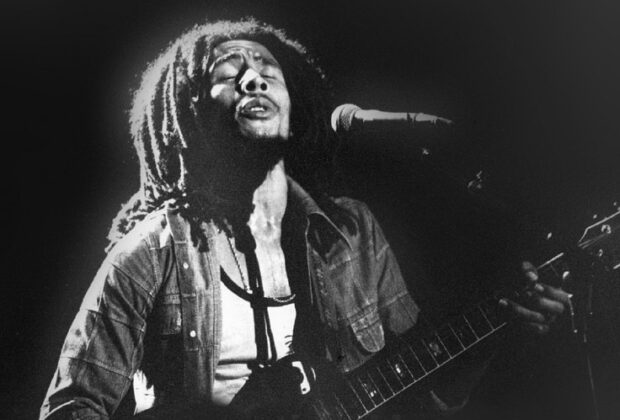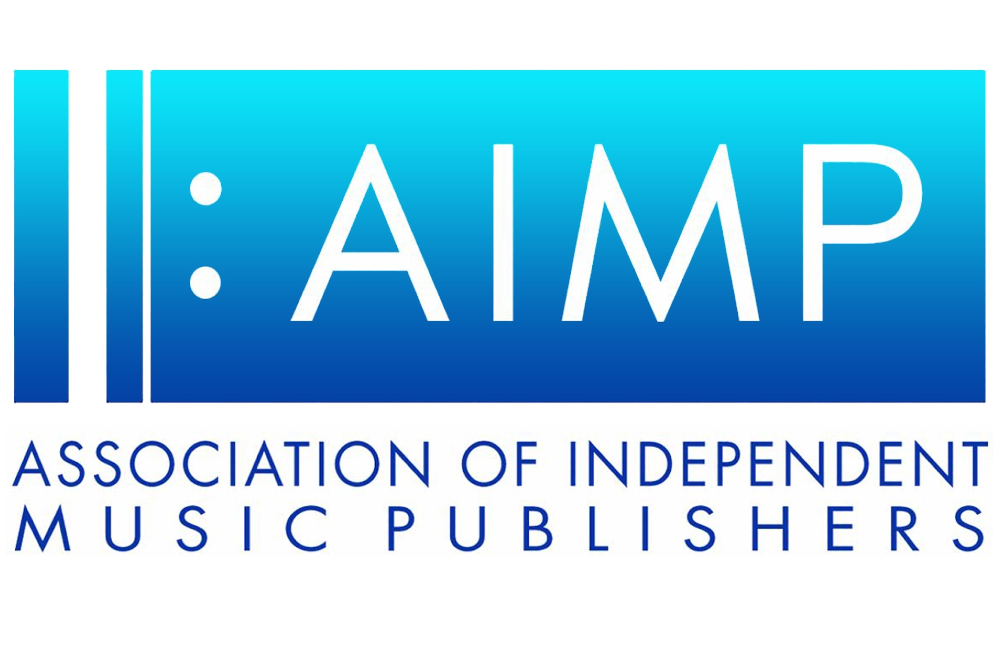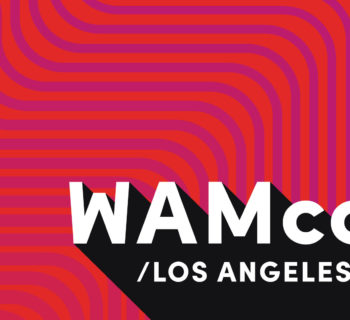Photo by Heather Harris
Bob Marley And The Wailers' seminal first release on Island Records, Catch A Fire, universally regarded as the album that put reggae music on the global stage, is being re-issued via UMe on November 3rd to celebrate the 50th anniversary of its original release in 1973.
A hugely anticipated new biographical drama film, BOB MARLEY: ONE LOVE, celebrating the life and music of an icon who inspired generations through his message of love and unity, is in theatres on January 12, 2024.
Produced by Ziggy Marley, Cedella Marley, and Rita Marley, and with Stephen Marley as the music supervisor, the film tells the inspirational story of how Bob overcame huge adversity to become one of the world’s most revered musical and cultural giants through the power and beauty of his revolutionary music. Produced in partnership with the Marley family, the film stars Kingsley Ben-Adir as Bob and Lashana Lynch as his wife, Rita. It’s directed by Reinaldo Marcus Green from a screenplay written by Terence Winter & Frank E. Flowers and Zach Baylin and Reinaldo Marcus Green.
CATCH A FIRE is the fifth studio album by Bob Marley and the Wailers and was the first to be released by Island Records UK. The album when issued originally had a limited release and was credited to The Wailers.
Housed in a memorable sleeve in the shape of a Zippo lighter designed by graphic artists Rod Dyer and Bob Weiner, CATCH A FIRE’s future versions would feature the portrait of Bob Marley smoking a “spliff,” taken by Esther Anderson.
Both LP and CD packages will also include a book comprised of classic images of Marley from photo shoots with long-time collaborators Adrian Boot, and Arthur Gorson, who shot images of Bob for two weeks in Jamaica, Dennis Morris, and Neville Garrick. The packages also incorporate press clippings from the era, while brand new sleeve notes have been written by renowned music journalist and author Chris Salewicz. The formats will utilize both iconic sleeve designs, the original famous Zippo lighter illustration version with Bob smoking a spliff. The D2C offering is a limited-edition run pressed on colored vinyl.
The album has received enormous critical acclaim, including being listed on Rolling Stone's list of the “500 Greatest Albums of All Time,” the second highest placement of the five Bob Marley albums on the list, after the posthumous compilation album Legend. It is also rightly regarded as one of the greatest, most important, and influential albums, across all genres, of all time.
The complete track listing is as follows:
| 3xLP+12" LP1 - Studio Album Concrete Jungle Slave Driver 400 Years Stop That Train Baby We've Got A Date (Rock It Baby) Stir It Up Kinky Reggae No More Trouble Midnight Ravers LP2 - Paris Theatre London / 24th May 1973 Rastaman Chant Slave Driver Stop That Train No More Trouble 400 Years Midnight Ravers Stir it Up Concrete Jungle Get Up, Stand Up Kinky Reggae LP3 - Sessions Slave Driver (Jamaican Extended Version) 400 Years (Jamaican Extended Version) High Tide Or Low Tide (Jamaican Alternate Version) Stir It Up (Jamaican Alternate Version) No More Trouble (Jamaican Extended Instrumental) Stir It Up (Jamaican Extra Organ Version) No More Trouble (Jamaican Extended Version) Stop That Train (Working Mono Version) 12" - Edmonton Sundown May 1973 Slave Driver (The Sundown Theatre in Edmonton, England. May 1973) Get Up, Stand Up (The Sundown Theatre in Edmonton, England. May 1973)Stop That Train (The Sundown Theatre in Edmonton, England. May 1973) 3CD CD1 - Studio Album Concrete Jungle Slave Driver 400 Years Stop That Train Baby We've Got A Date (Rock It Baby) Stir It Up Kinky Reggae No More Trouble Midnight Ravers CD2 - Paris Theatre London / 24th May 1973 Rastaman Chant Slave Driver Stop That Train No More Trouble 400 Years Midnight Ravers Stir it Up Concrete Jungle Get Up, Stand Up Kinky Reggae CD3 - Sessions + Edmonton Sundown May 1973 |
“Catch A Fire" was one of the first two reggae albums I ever heard, along with the breath-taking sound-track to The Harder They Come motion picture,” underlined reggae music historian Roger Steffens, author of So Much Things to Say: The Oral History of Bob Marley published by W. W. Norton & Company in July 2017.
“At that time, I was reading poetry in schools from September to May, doing a one-man show of living, mostly beatnik, American poets called Poetry for People Who Hate Poetry. Thus, it was the sublimely concise lyrics of Bob Marley and Peter Tosh and Bunny Wailer that gained my initial notice.
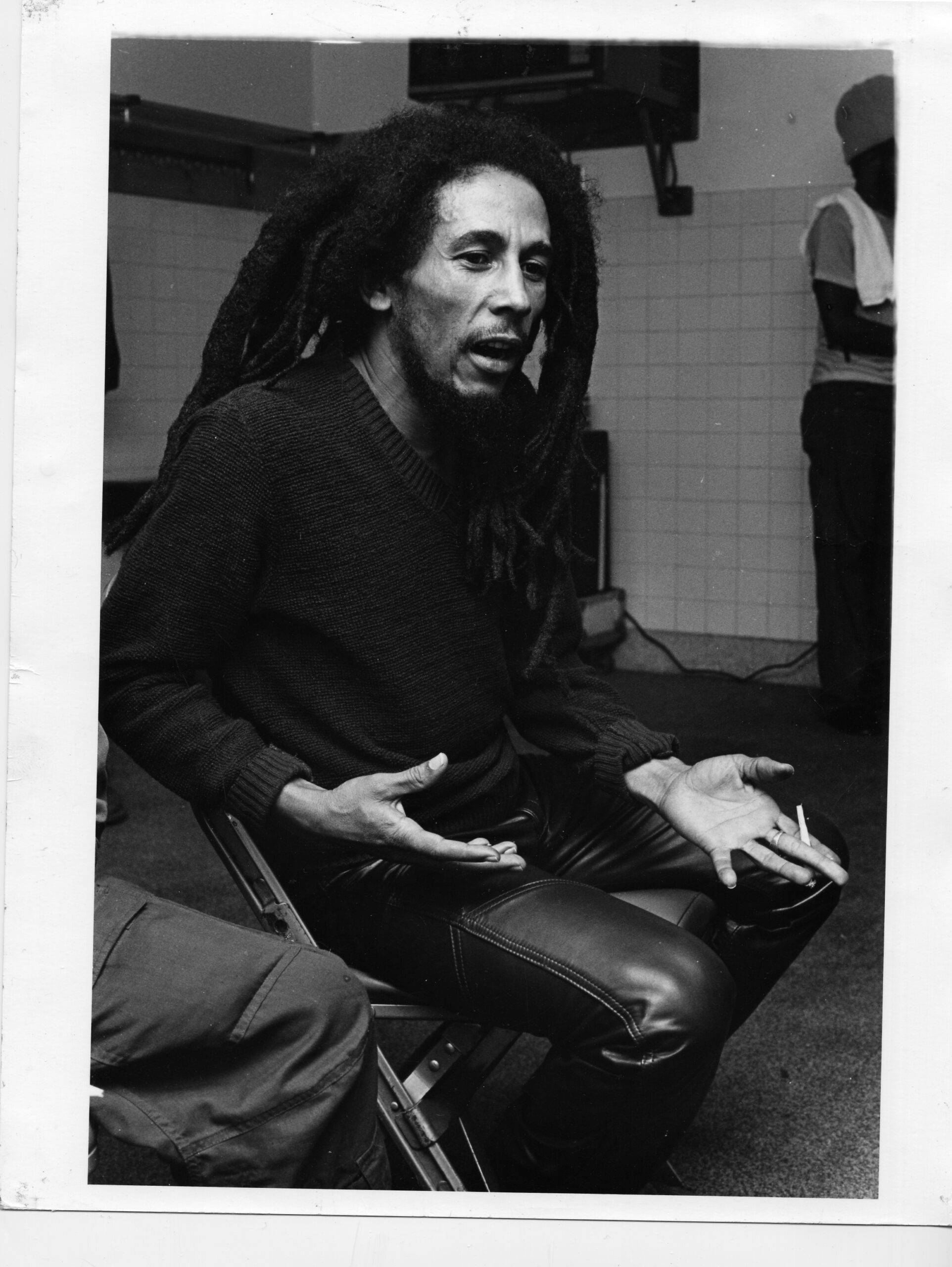
(Photo by: Roger Steffens)
Marley, especially, was able to reveal difficult concepts with almost haiku-like precision, as in ‘Slave Driver,’ in which he reduces ‘crapitalizim’ to its essence: ‘Good God, I think it's illiteracy, is only machine to make money’ Another song of slavery was the fiery ‘400 Years,’ Peter's acknowledgment that the same ancient disenfranchisement continues to the present era.
“The wry humor and patois quoting of ‘Kinky Reggae,’ led me to study the island's witty vocabulary. The calypso-ish banter of the song included the words "she had brown sugar all over her booga-wooga," which led most listeners to presume a lewd carnality, but the truth was more sociological than sexual.
“In Jamaica, when they cut down the sugar cane, there is nothing left but a dark brown root, with no particular usefulness. And the cane filed workers usually wore cheap canvas shoes known as ‘booga-woogas.’ So, when you see a girl on the streets of Kingston with ‘brown sugar all over her boogie-wooga,’ you know she is a canefield worker in from the country.
“The album also changed reggae itself through the influence of Chris Blackwell, who added lead guitar to some tracks, a rare thing on Jamaican recordings. Bob liked it, and on his first solo album in 1974, he added Al Anderson, a lead guitarist from New Jersey, as the first member of his new touring lineup. It was Al who would go on to play the sensational licks on Bob's first international hit, ‘No Woman No Cry.’
“Finally, often cited is the unique packaging for Catch A Fire, which resembled a flip-top Zippo lighter, opening in the middle and revealing a lighted die-cut flame. Good copies of the original now sell for many hundreds of dollars. Formally thought of as mere ‘novelty music,’ reggae was being given a first-class Rock style release, promoted as simply ‘The Wailers,’ a complete band, like their Island contemporaries, Traffic.”
“When Catch A Fire first came out in Spring 1973,” remembers poet and deejay Dr. James Cushing, “I was living in a big dormitory at UC Santa Cruz, and the first few times I would play that album, I'd leave my door wide open. People would stop by and ask ‘what's this music?’ and they'd stay for the rest of the side. The music was guitars, bass & drums, but it wasn't ‘rock’; the players were all black, but it wasn't ‘soul.’ It was totally new and totally captivating.
“Within a month, every party that quarter in my part of that dorm had to have Catch A Fire in the mix, especially side two with ‘Kinky Reggae,’ which the girls on the hall loved to sing along to. Marley and the girls would sing ‘He had a candy star / all over his chocolate bar’ and they'd all crack up... And the next day I would wake up having had dreams in which bits of ‘Midnight Ravers’ or ‘Stir It Up’ would play a prominent part, and coming out of the bathroom I'd say hi to one of the girls and tell her about the dream, and she'd say ‘Wow! I had a dream like that too!’"
During 1969, Jimmy Cliff’s “Wonderful World, Beautiful People,” “The Israelites” from Desmond Dekker & The Aces, and a hit single from Johnny Nash, “Hold Me Tight” earlier exposed reggae to radio airplay in Southern California and several Stateside areas. In the summer of 1972, Nash’s “I Can See Clearly” reached number one on the US Billboard and Cash Box charts.
Island Records’ Chris Blackwell, the visionary A&R man and label owner had signed a handful of reggae artists to bring the probing bass propelled messages from Jamaica to a global audience.
In June 1972, the Jamaican crime drama film, The Harder they Come, directed by Perry Henzell and co-written by Trevor D. Rhone, starring Jimmy Cliff premiered in Jamaica.
It tells the story of Ivanhoe Martin, (Jimmy Cliff), a young singer who arrives in Kingston, Jamaica, desperate and eager to become a star in that country. He falls in love with a woman and quickly signs a record deal with a powerful music mogul, and soon learns that the record game is rigged. Angered and confident, Ivan becomes increasingly defiant, and finds himself in a battle that threatens not only his life, but the very fabric of Jamaican society.
The well-received film yielded a reggae soundtrack courtesy of the Island company that further positioned these intriguing, enticing sounds to the world.
Needless to say, in fall of 1973 I was prepared to listen to Catch A Fire. I eventually witnessed eight Bob Marley & the Wailers concerts during 1975-1979. The first recital was on July 13, 1975 at the Roxy Theater in West Hollywood.
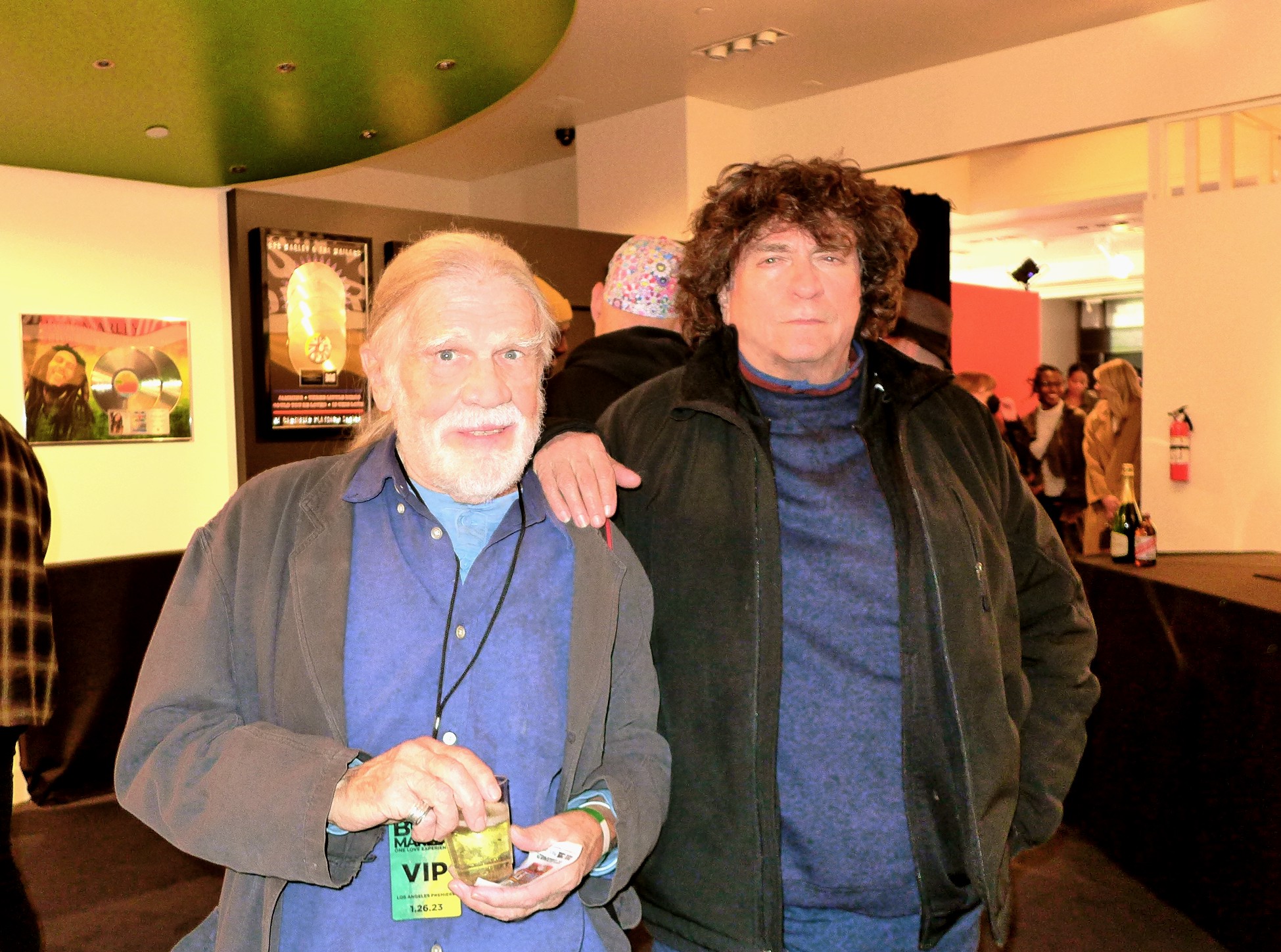
Pictured, L-R: Henry Diltz and Harvey Kubernik
(Photo by Heather Harris)
In May of 1976, Bob Marley & the Wailers played a multi-night engagement at the Roxy Theater in West Hollywood. Joining owner Lou Adler opening night were Jack Nicholson, Anjelica Huston, Warren Beatty, John Lennon, Ringo Starr, Robbie Robertson, Neil Diamond, Robert Hilburn, John Bonham, Bernie Taupin, Linda Ronstadt, Chris Darrow, Harry Nilsson, Carole King and Art Garfunkel.
John Lennon and Yoko Ono sat a few feet from me and were beaming the entire set. I had a brief chat with John and thanked him for touting reggae and blue beat music during a handful of his interviews in the seventies.
This cosmic event was broadcast in Los Angeles on KMET-FM (94.7), immediately widely bootlegged, later officially issued as Live at the Roxy, a two-disc album, in June 2003.
A few months after that show, I spoke with The Band’s Robbie Robertson about this monumental event. “I saw the Wailers at the Roxy. They were fine — really interesting — and Bob Marley is a great performer.”
I interviewed the Wailers in 1976 for Melody Maker. Our conversation was held in such a smoke-filled room in West Hollywood at the Island Records office on Sunset Boulevard that I forgot to turn on my cassette machine!
During their stay in L.A. I attended the band’s two-night stint at the Santa Monica Civic Auditorium with music journalist and photographer Heather Harris.
I then went to see Bob Marley and the Wailers in 1978 at the Starlight Bowl in Burbank. Bob was the first person on the tour bus and at the sound check. Justin Pierce, music editor of The Hollywood Press, and Ed Kociela, the rock critic on staff from The Herald-Examiner and I all had full stage access as reporters.
We watched the concert from the wings standing with Mick Jagger, who held daughter Jade in his arms the entire evening. Our circle included Peter Tosh, who was the opening act the very next day for the Rolling Stones at Anaheim Stadium.
Before the transformative evening concluded, a sweaty Marley ran to our area side of the stage and brushed me on his way to quickly huddle with Peter, who would join him for a surprise appearance on “Get Up, Stand Up.” Tosh later told Roger Steffens, ‘I remember we go backstage and Bob clapped my hand and say, “Bwoi, the Pope feel that one. And three days later, the Pope die!”
In the liner notes to 2001 Deluxe Edition Catch A Fire reissue on the Tuff Gong/Universal label, Richard Williams, the former deputy editor of Melody Maker and esteemed author wrote, “the unity and integrity of the music are undiminished either by time or Blackwell’s post-production work, the music and the message sounding every bit as uncompromising and imposing as they seemed back then to ears that had never heard such sounds before.
“Catch A Fire remains in full possession of the qualities that gave it such a pivotal role-alongside Jimi Hendrix’s Are You Experienced, Stevie Wonder’s Talking Book and Marvin Gaye’s What’s Going On-in the way music grew.”
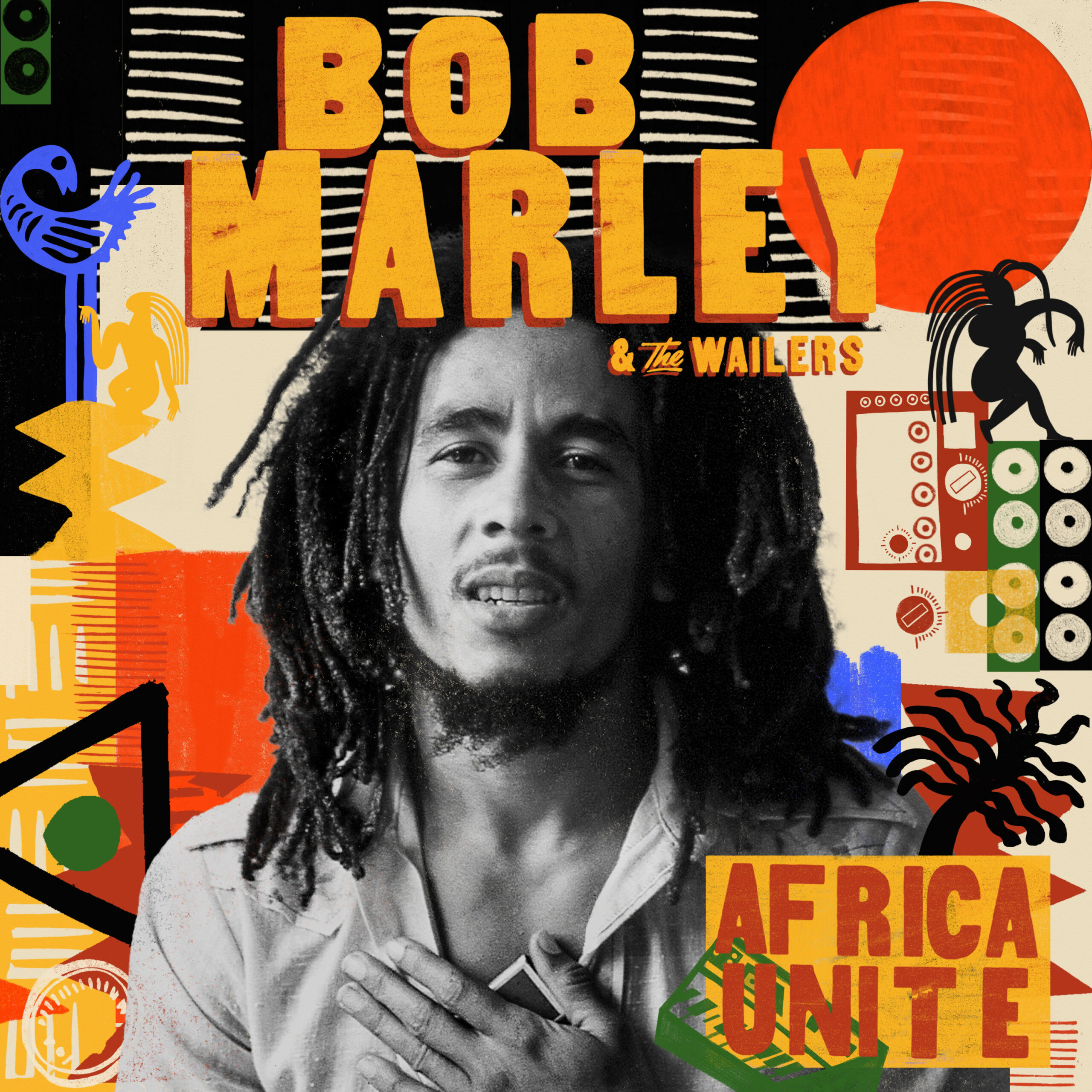
Bob Marley's immortality continues with Africa Unite, a majestic, posthumous album celebrating the vibrant fusion of Reggae and Afrobeats! Africa Unite is an extraordinary album that pays homage to the Reggae icon's greatest hits, beautifully reimagined and infused with the infectious rhythms of Afrobeats.
It was issued last August. Africa Unite features inspiring collaborations between Bob Marley's classics and a stellar line-up of contemporary African musicians.
Bob Marley, a Rock and Roll Hall of Fame inductee, is notable not only as the man who put Reggae on the global map but as a statesman in his native Jamaica; he famously brought together the country’s warring factions.
Today, Bob Marley remains one of the 20th century’s most important and influential entertainment icons. Marley’s lifestyle and music continue to inspire new generations as his legacy lives on through his music. In the digital era, he has the second-highest social media following of any posthumous celebrity.
The official Bob Marley Facebook page draws more than 74 million fans, ranking it among the Top 20 of all Facebook pages and the Top 10 among celebrity pages. Marley’s music catalog has sold millions of albums worldwide. His iconic collection LEGEND holds the distinction of being the longest-charting album in the history of Billboard Magazine’s Catalog Albums chart and remains the world’s best-selling reggae album.
Marley’s accolades include inductions into the Rock and Roll Hall of Fame (1994) and ASCAP Songwriters Hall of Fame (2010), a GRAMMY® Lifetime Achievement Award (2001), multiple entries in the GRAMMY® Hall Of Fame, and a star on the Hollywood Walk of Fame (2001). For more information, visit bobmarley.com and facebook.com/bobmarley.
(Harvey Kubernik is the author of 20 books, including 2009’s Canyon Of Dreams: The Magic And The Music Of Laurel Canyon and 2014’s Turn Up The Radio! Rock, Pop and Roll In Los Angeles 1956-1972. He has also written titles on Leonard Cohen and Neil Young.
Sterling/Barnes and Noble in 2018 published Harvey and Kenneth Kubernik’s The Story Of The Band: From Big Pink To The Last Waltz. In2021 they wrote Jimi Hendrix: Voodoo Child for Sterling/Barnes and Noble. Harvey and Kenneth are writing doing a book for 2024 publication by Insight Editions, Images That Rocked the World (The Music Photography of Ed Caraeff).
Otherworld Cottage Industries in 2020 published Harvey’s Docs That Rock, Music That Matters.
His writings are in several book anthologies, including, The Rolling Stone Book Of The Beats and Drinking With Bukowski. Harvey wrote the liner notes to the CD re-releases of Carole King’s Tapestry, The Essential Carole King, Allen Ginsberg’s Kaddish, Elvis Presley The ’68 Comeback Special, The Ramones’ End of the Century and Big Brother & the Holding Company Captured Live at The Monterey International Pop Festival.
On October 16, 2023, ACC ART BOOKS LTD is publishing THE ROLLING STONES: ICONS. 312 pages. $75.00. Introduction is penned by Harvey Kubernik. Spanning six decades, and countless tours and album covers, this portfolio features imagery from some of the most eminent names in photography, alongside the photographers’ own memories and reflections. Includes photographs by Terry O’Neill, Gered Mankowitz, Linda McCartney, Ed Caraeff, Ken Regan, Douglas Kirkland, Dominque Tarle and founding member, bassist and photographer, Bill Wyman. Each photographer has selected images for their chapter and written an introductory text about working with the band
During 2006 Kubernik spoke at the special hearings initiated by The Library of Congress held in Hollywood, California, discussing archiving practices and audiotape preservation.
In 2017 Harvey appeared at the Rock and Roll Hall of Fame in Cleveland, Ohio, as part of their Distinguished Speakers Series). •

